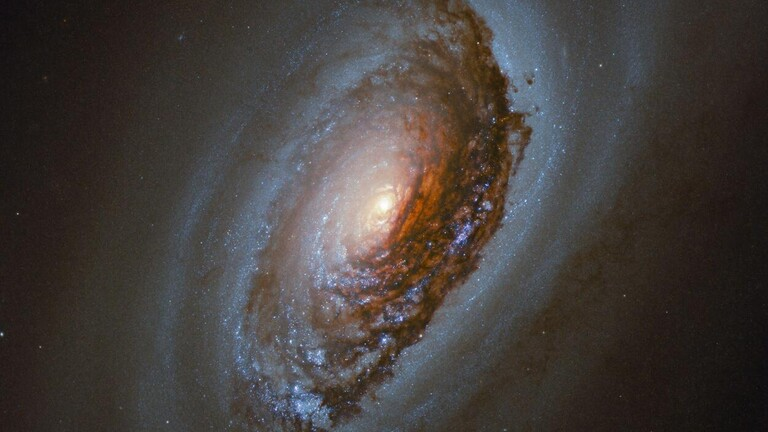Scientists finally solve the mystery of the “evil eye” galaxy

An international team of astronomers has discovered that gaseous hydrogen in the strange outer disk of galaxy M64, known as the "evil eye", comes from a smaller nearby dwarf galaxy.
The team wrote a paper describing their findings in Astrophysical Journal Letters.
Astronomers have known about the existence of M64 for two and a half centuries - and it's famous for its ominous appearance, which has earned it the nickname "Evil Eye".
Previous study of the galaxy showed that it is unique in that the outer, hydrogen-rich disk rotates oddly in the opposite direction to the inner disk of stars in the galaxy, indicating that they have no common origin.
This has led to speculation that the outer fragment was cannibalized from another nearby dwarf galaxy. However, previous work could not find any evidence of the previous existence of the other galaxy.
And in this new work, scientists have finally found what previous researchers were looking for: material near M64 that was left over from another, smaller galaxy when it was dismantled.
To learn more about M64, which lies about 1.4 million light-years from Earth, scientists studied data from the Subaru Telescope's Hyper Suprime-Cam, looking at regions around the galaxy rather than directly at it.
In doing so, they found evidence of a galactic halo - which is known to form during galaxy mergers.
They also found a dense group of stars known as "shell stars", which is a group of stars that occur through the gravitational interaction between two merged galaxies.

The team then created simulations to depict the "shells" and showed that they are consistent with previous findings with other small galaxy mergers - where a smaller galaxy is pulled into a larger galaxy.
The team then confirmed what they observed by studying data from the Hubble Telescope. The data allowed them to make estimates regarding the composition and mass of the galaxy they suspected of sucking.
They found that both are similar to the Small Magellanic Cloud, a small galaxy close to the Milky Way that previous research has shown is slowly being pulled apart.
The density was found to be about 500 million solar masses, which is roughly equivalent to the mass of the hydrogen disk that makes up the outer part of the galaxy M64.
The scientists conclude that their work together provides a strong case for cannibalizing a dwarf galaxy as the source of M64's outer hydrogen disk.
Source : websites

